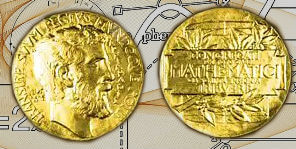
Mathematicians can showcase skills so excellent that they end up bagging a ‘Nobel Prize’ in honor of their tremendous achievements in the math sector. The International Congress of the IMU (International Mathematical Union) awards this tribute to an exceptional mathematician every four years.
The award gets given to mathematicians who are not yet forty years old, and as many as four people can get the honor at a go. The prize-giving ceremony takes place when the IMU hold a meeting every fourth year to celebrate the milestones made in math.
For mathematicians, receiving of such a prize is a great honor. In fact, other than being a recipient of the Abel Prize, no other award can match the Fields Medal. As such, recipients of such honors get highly respected amongst the math circles, and their work gets a lot of praise all over the world.
For you to qualify as a recipient of this great honor, you must show that you have excelled in the math field beyond expectations. Your contributions to the field have to be exemplary such that they surpass what others before you have been able to achieve while they were active.
The prize came to be almost a century ago in the year 1936. So highly regarded is this honor that mathematicians often refer to it as their Nobel Prize. The factors that stand out between this honor and the Abel medal are that this one has age restrictions and is given much less frequently as compared to the Abel.
If you are lucky to get this medal, you also get to take home fifteen thousand Canadian dollars, a monetary award that came to be in 2006. The idea behind the prize was to honor the great work of one of the greatest mathematicians of all time known as John Charles Fields. John was involved in the design of the medal as well as the funding of the commercial component that comes with the honor.
The first recipients of the award were an American known as Jesse Douglas and a Finnish called Lars Ahlfors. This awarding took place way back in 1936, and it set the motion for the ceremony which continued to honor young mathematicians from across the globe.
The surprising thing was that as of 2015, no woman had bagged the medal. Maryam Mirzakhani, an Iranian woman, made the headlines when she changed this fact by getting crowned with the medal in 2016. It was seen as a significant achievement on the part of women as more females would feel encouraged to showcase their exceptional math skills as a result of the award.
There are some conditions that you should meet to take the medal home with you, besides being exceptionally good at math. First off, you must be aged less than forty years at the beginning of the year the award gets given out. This restriction got put in place as a way to encourage the younger generations to put more efforts into making achievements in the field.
The youngest mathematician to ever receive the medal is Jean Serre who got it aged twenty-seven in 1954.
Thanks to awards such as the Fields Medal, mathematicians feel motivated to work towards more significant achievements in their field.